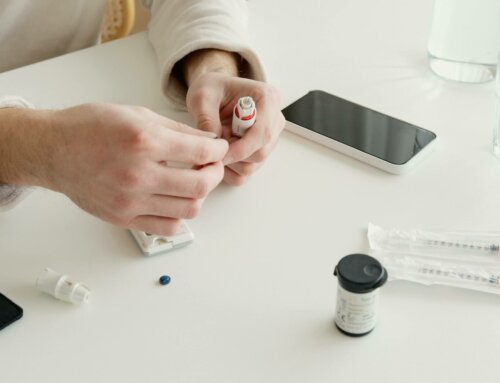Finding the right type of insulin delivery system is a major decision when you have diabetes type 1. The regular use of insulin is essential to maintain optimum health. Discover more about 3 delivery choices when you have type 1 diabetes to determine which one is right for you.
- Insulin can be injected using a syringe and vial of insulin, an insulin pen or continuously by wearing an insulin pump. These three major insulin delivery options should be considered depending on your specific lifestyle. Your choice might be determined by what your insurance will cover. Otherwise the decision is typically based on what system you are most comfortable with. The 3 main choices include a pen, pump or syringe.
- An insulin syringe uses a thin needle to inject insulin under the skin. Syringes can be used with nearly any type of insulin. There are a variety of brands and types to choose from. Most insurance carriers cover the cost of syringes and they are also an inexpensive option. You must always check to ensure you have injected the right dose with this manual delivery system. It also takes more time to use a syringe because there are several steps including filling it with air and drawing the right dosage of insulin into the syringe. Be sure to use a new syringe each time.
- Insulin pens work much like syringes. There are disposable and reusable versions. A reusable pen uses an insulin cartridge that must be inserted into the pen. The disposable pens are conveniently pre-filled with insulin. You need to administer two injections if you are using two different types of insulin. Insulin pens are usually easier to use than syringes but they may cost more money. All you need to do is dial the proper insulin dose on the pen then press the plunger on one end to inject the insulin through a needle on the other end. A memory feature on the pen can tell you how much insulin you took and when you administered it. Insulin pens are more expensive than syringes and some insurance companies do not cover them. Also not all types of insulin are available in an insulin pen.
- With an insulin pump, a wire catheter is inserted under the skin and it delivers the insulin to the body through a tube that connects to the pump. The pump is the size of a pager and can be put in a pocket or attached to your belt. It delivers a steady stream of insulin 24 hours a day. The pump has a button so you can give yourself an additional dose of insulin when you eat or see an elevated number. It is a good option for people with diabetes type 1 who may not have reached their target blood glucose levels using a syringe or pen.
- Because it delivers a steady stream of insulin an insulin pump can help you maintain better control of your blood sugar. It is also easy to use and monitor. Each pump company will assign a pump trainer to you for a full explanation and demonstration. Keep in mind there are some risks. The catheter part of the infusion set must be changed every few days to minimize the risk of infection. You have to pay careful attention to your blood sugar levels in case they drop or elevate. You are always attached to the device and these pumps can be costly. Your insurance carrier might not cover all the costs including essential supplies such as special adhesives and batteries that must be replaced.
When you have the facts about insulin delivery choices you can make an educated decision about the right one to include in your diabetes self-management plan. Inquire about which ones your insurance carrier covers. Talk to your health care team to help you make the right decision.












Leave A Comment